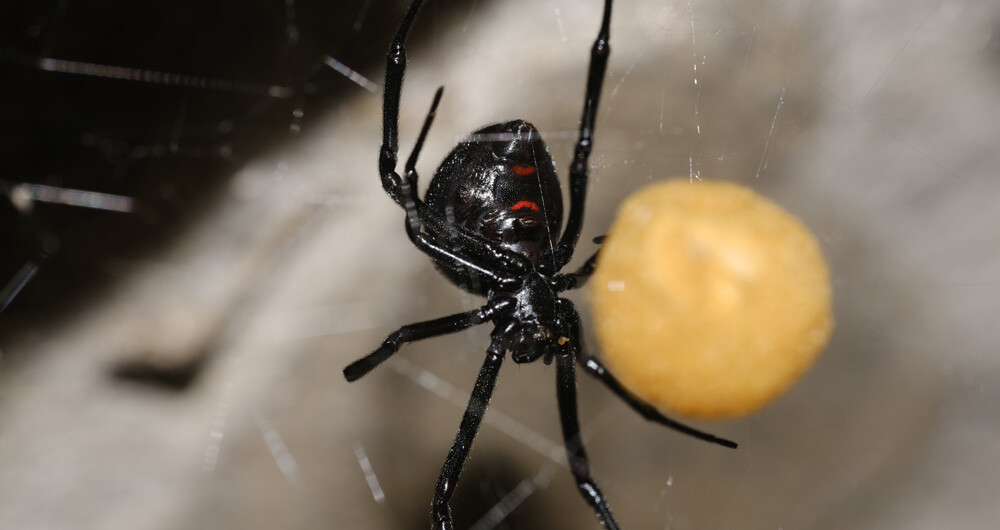5 Slapstick Ways Scientists Figured Out How the Natural World Works

An apple (so the story goes) fell on Isaac Newton’s head one day, and this led him to his theory of gravity. That story is utter nonsense. In reality, some writer who wasn’t Newton came up with the apple story 60 years after the man’s death, nothing hit anyone’s head even in the story and the apple was just an illustration of gravity rather than a description of something that Newton really saw fall.
So, does that mean scientists come upon all their formulations just by sitting at desks and performing boring calculations? Nope. The real history of science is filled with misadventures just as ridiculous as the stories we tell children. For example...
A Scientist Dressed Frogs in Tight Pants to Prove the Origin of Life
We’ve known that sex leads to pregnancy for a long time, possibly for longer than we’ve even been human. We’ve known that the menstrual cycle has something to do with pregnancy, and we’ve known that semen has something to do with pregnancy, and yet we remained somewhat ignorant of the exact mechanics of went on inside the body. Consider, for example, Hippocrates, who thought semen was created in the brain and stored in hair. For him, this explained why men have beards.
Don't Miss
People had some inkling that semen was necessary for making babies, as demonstrated by attempts at barrier methods of birth control going back thousands of years. But some thought that semen merely nourished the fetus rather than being an essential part of conception. In the 1760s, Italian scientist Lazzaro Spallanzani sought to find out just how important semen’s role was. To determine this, he dressed male frogs in pants, “tight taffeta pants.” These well-dressed males tried mating with females, but with no sperm able to penetrate the trousers, no eggs ever produced offspring.

Perhaps he could have demonstrated the same idea more rigorously using human subjects. A similar human trial, however, would have come with many complications, both logistical and moral. Besides being a scientist, Spallanzani was also a Catholic priest. Plus, if he used humans, Spallanzani wouldn’t have had an excuse to dress frogs in tight taffeta pants.
A Bird with a Spear in It Taught Us About Migration
To the people of Europe, bird migration was another phenomenon they always knew but never fully understood. Every winter, birds flew away. In the spring, people saw birds again. But where did those winged rascals go in the meantime?
One theory said they went to the bottom of lakes during the winter. That might sound absurd, but it was backed up by our old friend the frog hibernating underwater, and by how fishermen would sometimes catch the odd bird in their nets. These were dead birds, who supposedly died in midair and fell into the water, but they were still birds found in the water, dammit.
In the 17th century, some people thought birds migrated to the Moon every winter. We see birds fly high, right, and they eventually disappear, so maybe they fly straight up. If there’s no atmosphere between the Earth and Moon (as people were starting to theorize), birds would encounter little resistance on the way. They could make the trip in a month, and maybe humans could follow them one day.

In 1812, however, Europeans got their first evidence that birds migrate to a different continent. A stork landed in a German village with a spear through its neck. It was an African spear, made of African wood. The bird had evidently been to Africa and had come all the way back, thousands of miles.
One bird may or may not have been enough to convince the scientific establishment (“one swallow does not a summer make,” as they say), but Germany would go on to document no fewer than 25 different storks who arrived with some spear of arrow embedded in them that could be traced to Africa. Enough came that the Germans gave them their own word, the Pfeilstorch. The original Pfeilstorch has been preserved and put on display, to convince anyone who goes babbling about Moon birds nowadays.

A Frenchman Proved Diamonds Are Carbon by Setting One on Fire
A diamond is made of pure carbon. That can come across as a little surprising, if you know that charcoal is also made of pure carbon, as diamonds and charcoal are different from each other in at least three ways. But in 1772, a French scientist, Antoine-Laurent de Lavoisier, proved diamonds and charcoal are two forms of the same thing. He burned both, and while burning many substances produces the gas we now call carbon dioxide and water, burning these two produced only carbon dioxide. What’s more (or, rather, what isn’t more), burning a gram of diamond produced exactly the same amount of carbon dioxide as burning a gram of charcoal.
Burning diamonds isn’t easy. A simple flame won’t do the job. But Lavoisier managed it, by focusing a beam of light narrowly enough.

“The madman!” say some people on hearing this. “How could he just burn diamonds? Aren’t those things rare and valuable?” The answer is yes, but also no, but also yes. We can make diamonds now, ones identical to ones you dig out, and even in the 19th century, vast diamond deposits meant the gems needn’t have been considered rare at all. In the 18th century, however? Diamonds really were rare.
We imagine the news that this guy — a nobleman and an aristocrat — could set fire to diamonds, in the name of making a point, didn’t earn him many fans when the French Revolution broke out. In 1794, he died by guillotine. Though, they didn’t just want to kill him for frivolous gem disposal. They hated him because he was also a tax collector, and the tobacco he sold was full of cheap fillers, and we can all understand resenting someone like that.
Another Frenchman Measured the Speed of Electricity by Zapping Hundreds of Monks
During some of the same years that Lavoisier was burning his path through the field of chemistry, fellow Frenchman Jean-Antoine Nollet was figuring out a weird thing called electricity. Among his popular demonstrations of this “science of wonders” was something called The Flying Boy. He’d hang a boy from the ceiling with silk and connect the boy’s feet to an electric generator. Static would attract bits of paper to his body, and the charged boy could even turn pages of a book remotely. Touch the boy, and you’d get a shock.

“...No.”
Nollet fought with rival scientists about the nature of electricity. Just how did electricity flow? And how quickly did it flow?
To answer this last question, he assembled 700 monks (Nollet himself was a deacon). He got the men to hold hands. He shocked the first man using a Leyden jar, an early type of capacitor. He then observed how soon after the initial spark that the final man jumped. All the men jumped, more or less simultaneously. This proved that electricity travels quite quickly. Good job, Nollet!
A Doctor Demonstrated How Dangerous Black Widow Spiders Are By Letting One Bite Him
Lastly, we’d like to share a comparatively recent story, from just 90 years ago. At the University of Alabama, Dr. Allan Blair was investigating the most important subject of all: spiders.
The black widow spider at the time had a reputation for being dangerous. Science does not rely on reputation, however. Science cares about properly documented phenomena, and so, Blair sought to answer whether such a tiny creature could really inflict as much pain as popular wisdom said. He held one such spider to his little finger and let it bite him. Then he sat down to write what he experienced.
“Dull, aching pain,” he wrote, 20 minutes in. Two minutes later, “Slight aching pain was present over the lateral surface of the left side of the chest.” An hour after this, “Aching pains were present in the muscles of the neck,” and then the pain was too great for him to keep writing. His assistants now had to take over that job, even as Blair was transferred to the hospital.

“Severe aching pain” turned to “agonizing pains.” Next, “the patient was unable to straighten up or stand... being in a condition of profound shock.” His mouth stuck into an oval shape, he threw up and a visible red streak now climbed up his hand. The next morning, he “became so upset mentally that he was afraid if firm control was not exercised he would go insane.” He improved over the course of that day, however, and spent most of it drinking orange juice. The next day, he was able to return home.
Blair provided a useful account of the bite’s effects. “The venom injected by the bite of the adult female spider, Latrodectus mactans, is dangerously poisonous for man,” he concluded. However, he did not succeed in what he originally intended to do. The original plan was for him to receive multiple bites and gauge whether immunity reduced successive bites’ pain. “I was presented with the opportunity of deciding this point,” he wrote, “but lacked the courage to submit myself to a possible repetition of the first experience.”
Never mind, Blair. We still honor your sacrifice, and when we today play with our pet black widows, we make sure to wear gloves.
Follow Ryan Menezes on Twitter for more stuff no one should see.